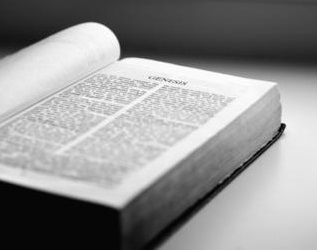 You may have noticed that the Bible isn’t always in chronological order. Psalms and Proverbs come after Nehemiah and Esther. But much of Psalms and Proverbs is set before Nehemiah and Esther. Skipping to the New Testament, 1 Thessalonians was one of the first books written, but it appears after John, one of the last books written. The examples could go on.
You may have noticed that the Bible isn’t always in chronological order. Psalms and Proverbs come after Nehemiah and Esther. But much of Psalms and Proverbs is set before Nehemiah and Esther. Skipping to the New Testament, 1 Thessalonians was one of the first books written, but it appears after John, one of the last books written. The examples could go on.
What is a Bible reader to make of this potentially confusing arrangement of books? First, don’t panic. In large part, the Bible is organized chronologically. Reading the Old Testament straight through from Genesis to Nehemiah will provide you with a generally chronological account of human history from creation through the Jewish return from exile.
Second, departures from a chronological presentation often are obvious even to novice Bible readers. Second Kings, for example, ends with a description of the deportation to Babylon, and the narrative portion of the next book, 1 Chronicles, begins with King Saul. Most will easily recognize this as a jump back in time. And though Mark, Luke, and John each restart the narrative at the beginning of Jesus’ life and ministry, this is hardly confusing.
But if the order of the Bible’s books still seems puzzling, keep in mind why our Bible is arranged the way it is. The order of our Old Testament books is based on the order of the Septuagint, the Greek translation of the Hebrew Scriptures. It divides the books into three sections based on their literary style. First are the narrative books (Genesis through Esther), then the wisdom books (Job through Song of Solomon), then the prophets (Isaiah through Malachi). The New Testament similarly is arranged in three sections with the books sorted according to their literary style. First are the narrative books (Matthew through Acts), then the Epistles (or letters to early Christians), then Revelation (a book in the apocalyptic genre and unlike any other New Testament writings).
Remember that the sacred writings of other world religions are not presented in chronological order either. The Qur’an is divided into 114 chapters, or suras, with the longer ones generally appearing first. Similarly, the Buddhist scripture the Sutta Pitaka opens with three sections of teaching attributed to Buddha and his disciples organized by length. What’s more, the Jewish people organized their Scriptures in a manner that was partially non-chronological for centuries before Christianity came on the scene.
As adherents of varied religions have recognized, a strict timeline is not always the best way to convey theological principles. The Hebrew Scriptures, for instance, place the book of Ruth immediately following the book of Proverbs, suggesting that Ruth embodies the principles of godly womanhood described in the final chapter of Proverbs.
So take heart when Bible books seem like they’re out of order. What appears puzzling has a good explanation. Rightly understood, it can help you know God and His Word more fully.
Wow, that was a huge rationalization. No apologies. http://the-democratic-republican.blogspot.com/2013/06/a-question-of-god.html
“There will come a day when YOU will pass away
What will they say about thee?
When the end comes, we know
You were just a little TROLL
Life goes on without thee”
(I however, will apologize: to Irving Caesar)
Thank you that was very helpful to me.